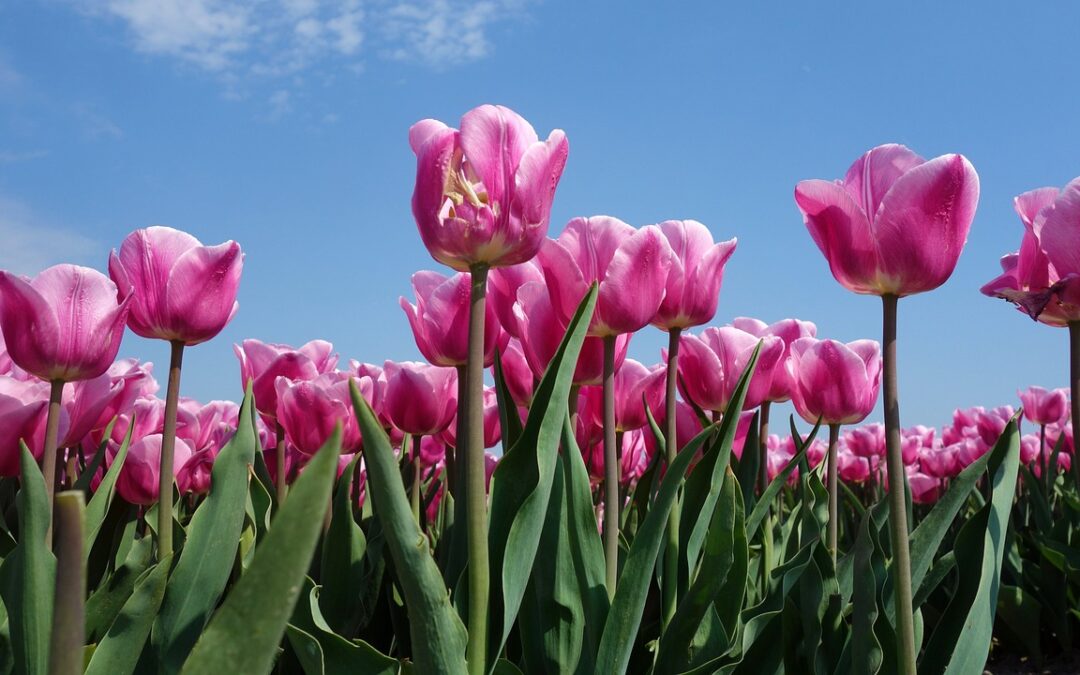How and When to Plant Bulbs
Knowing how and when to plant bulbs can be a huge payoff in the Spring, with a colorful display of flowers seeming to appear magically. Here’s a step-by-step guide on how to plant bulbs in the fall.
How and When to Plant Bulbs
Choose the Right Bulbs
The most common fall-planted bulbs include tulips, daffodils, crocuses, and hyacinths. All are beautiful. However, the quality of any bulb can make a huge difference, so be sure to do a little research before you purchase any bulbs.
“Start your bulb garden out on the right path by planting only quality bulbs available from local garden centers or reputable online/mail order sources. It’s best to shop early to ensure the best selection of variety and quality. Select large, firm bulbs, and avoid those that are sprouting or molding.” — Purdue Ag — Autumn Time to Plant Spring Flowering Bulbs.
Select a Location
Bulbs prefer well-drained soil and sunlight. Choose a location in your garden that receives at least 6 hours of sunlight daily. Make sure the soil is not waterlogged, as bulbs can rot in overly wet conditions.
“Even healthy bulbs will fail if they’re planted in the wrong spot. Most bulbs do best in full sun (at least 6 hours a day of direct sun) and well-drained soil. If you’re unsure about where to plant bulbs, do a little research into the growing conditions the type of bulb you’re planting needs.” — Better Homes & Gardens — Tips for Planting Bulbs to Ensure a Beautiful Display
Testing the soil before planting bulbs is a good idea. “Spring-blooming bulbs tend to do best in neutral to slightly acidic soil, so you might want to conduct a pH test of your soil to make sure it’s amenable to growing these plants. Your local botanical garden extension, nursery or garden center can offer advice for amending the soil if necessary.” — Bob Vila
It’s Time to Plant
For garden zones 4 & 5 here in Central Indiana, mid to late October into early November is a good bet to plant your bulbs. The key is to plant the bulbs a few weeks before the first hard freeze.
Always read the instructions for the bulb type you’re planting because preparation and planting may vary. For most bulbs, a trench about 2-3 times as deep as the bulb’s height will work.
Place the bulbs in the hole or trench with the pointed end facing up. The recommended planting depth and spacing can vary depending on the bulb type, so check the packaging for specific instructions. Generally, you want to plant larger bulbs deeper than smaller ones.
Fertilize the soil after planting the bulbs; a 10-10-10 fertilizer is a safe bet. You might also add a bit of compost to the hole.
Cover, Mulch, and Water
Gently cover the bulbs with soil and press it down to remove any air pockets. Applying a layer of mulch can help regulate soil temperature and moisture levels. It also prevents weed growth and insulates the bulbs during the winter.
Water the area thoroughly to settle the soil and provide moisture for the bulbs to start their root growth. Bulbs are generally low maintenance. However, it’s a good idea to keep an eye on soil moisture. You should water as needed to keep the soil moist but not soggy.
Mark the Spot
To avoid accidentally disturbing the area while gardening, mark where you’ve planted the bulbs. Have you forgotten where you planted bulbs? I have. It wasn’t a flower, but not long ago, I planted garlic and forgot the exact location. I accidentally dug them up the following Spring while preparing my garden. I learned my lesson. Now, I mark the spot.
Is it Spring Yet!?
In the Spring, your bulbs will start to emerge and bloom. Enjoy the beautiful flowers that your fall-planted bulbs produce!
Remember that specific planting instructions can vary depending on the type of bulb and your local climate, so it’s a good idea to refer to the packaging or consult a local gardening expert for more precise guidance. Isn’t it great that we can still garden this late in the year! Happy gardening!
How Can We Help You?
Berger Hargis has a company philosophy of providing personal excellence for all our services. Our growth and success have been due entirely to our commitment to honest, excellent customer service. The company is built on the referral business we have received due to this philosophy. If we can answer any questions about prepping your lawn and garden for the coming months, please don’t hesitate to Contact Us.
About the Author
Randy Clark is a speaker, coach, and author. He publishes a weekly blog at Randy Clark Leadership.com. Randy is passionate about social media, leadership development, and flower gardening. He’s a beer geek, and on weekends he can be found fronting the Rock & Roll band Under the Radar. He’s the proud father of two educators; he has four amazing grandchildren and a wife who dedicates her time to helping others. Randy is the author of the Amazon bestseller The New Manager’s Workbook, a crash course in effective management
Image by Aline Dassel from Pixabay
Go Back








